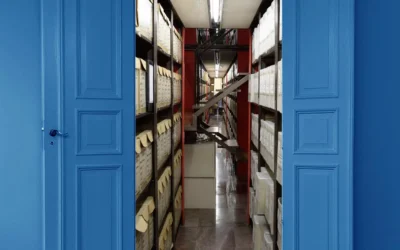Best Practices for Crafting an Archival Project Charter
Margot Note
The authority to begin an archival project is granted in a variety of ways, depending on the type of project. Approval may be in the form of an internal document signed by the sponsor, or an elaborate contract with an external client. Some organizations call this formal authority to advance a “project charter”, but it can also be known as a proposal, project datasheet, project specification, or a project definition document.
Defining the Charter
Archival project charters recognize the existence of the project and give the project manager the authority to spend resources. The charter includes the business need for undertaking the project and the deliverables that will be refined as the project progresses. It also describes the links between the project’s goals and the broader aims of the organization. A well-written charter forms the basis for detailed scoping, planning, and controlling.
Questions to Ask
Before writing the charter, ask yourself questions that will generate thoughts about the project:
- What benefits are expected from the project? Over what period are they expected?
- Who will benefit from this project? Who are the stakeholders?
- Does the charter name the business needs that the project will address?
- Does the charter have deliverables?
- Has the financial analysis been completed for the project?
- What are the conditions under which the project will take place?
- Does the charter state what resources will be involved?
- Does it outline the organization’s responsibilities about resources and decisions?
- Does it include statements of what constitutes success?
- Does it supply explanations of how success will be measured?
- Are there any specific scope inclusions or exclusions?
- How long may the project take? What are the critical dates?
- What investments will be necessary and over what period?
- What assumptions were made when identifying timescales, budgets, or benefits?
- What may cause the project to fail? How will risks be mitigated?
An essential element is the archival project’s purpose, stated as a mission statement, a one-line summary of what the project aims to achieve, or a more thorough description of the business objectives of the project.
If resources, staff, and vendors are known at the launch of the project, list them as well. A description of the project’s risks, assumptions, and constraints should be incorporated. Project approval requirements and acceptance criteria should be added too.
Key Stakeholder Sign-off
The archival project manager must be named in the charter along with his or her responsibilities and extent of authority. Also integrated is a statement of the sponsor’s support. The charter begins the chain of commitment by putting in writing the sponsor’s support for the project and the project manager. All key stakeholders must approve the project charter as a sign of their agreement on the project definition. This announcement states that the project manager is authorized to perform specific tasks under the authority of the sponsor.
A Baseline Understanding
The purpose of the archival project charter is to describe the project to stakeholders and establish the project manager’s authority to gather and make use of resources. Often the charter has sections like the project plan—and is sometimes used as the project plan. It’s brief, several pages at most, and supplies an overview of a more comprehensive project plan.
For archival projects, especially at smaller organizations, a project charter may seem unnecessary. However, the act of constructing a document as well as getting stakeholders to approve it makes the project run smoother. If changes or misunderstandings occur, the document acts as a contract to denote to make decisions. The charter allows the archival project manager to move forward with minimal problems.
Margot Note
Margot Note, archivist and consultant, writes for Lucidea, provider of ArchivEra, archival collections management software for today’s challenges and tomorrow’s. Read more of Margot’s posts with advice on running successful archival projects.
Similar Posts
Understanding Deeds of Gift
A deed of gift is a legal instrument that transfers ownership of archival materials from donor to repository; this primer details what to include.
Archival Customer Service
Archivists extend their expertise beyond traditional reference services by aiding and training users, as champions of exceptional customer service.
Unlocking Access in Archives
The shift in archival processing from a rigid structure to a more flexible, access-oriented approach is crucial in meeting the dynamic needs of users.
Enhancing Collaboration; Methods for Archivists
Archivists can enhance collaboration through user-centric approaches and efficient processing methods based on customer service principles.
Hosting service
Enjoy all of the benefits of your Lucidea solution with secure, reliable, stress free hosting
Programs & incentives
No matter your size or budget, we’ve got you covered, today and tomorrow




Leave a Comment
Comments are reviewed and must adhere to our comments policy.
0 Comments